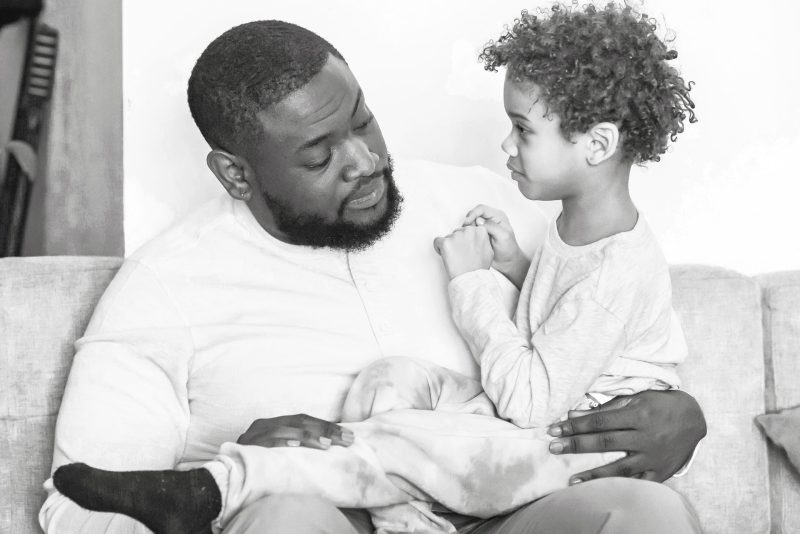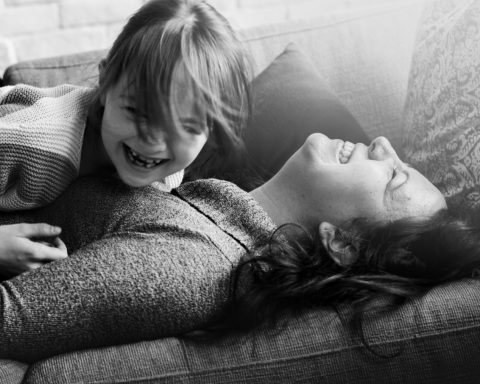Handling one’s emotions can be a tedious and overwhelming job for everyone, as they are complex and dynamic. Most adults with such capability to manage emotions often face difficulties, leading to unhealthy coping mechanisms and the need for professional help to handle their emotional faculties.
For children, it is quite a different case. They, too, face difficulty handling emotions, but unlike most adults, they have limitations. Children do not have the right stage of cognitive development and have no experience and perspective on situations, knowledge of proper catharsis, and healthy coping mechanisms.
Children need their parents or guardians to process their emotions with them, along with an environment that is nurturing and understanding. Parents play a crucial role in supporting children as they explore and identify their intricate terrain of emotions. Co-regulation is when parents assist their children in regulating their emotions.
In this article, you will understand the concept of co-regulation—from its core definition, importance, strategies, and application of this technique to understand and manage emotions effectively for children, along with their parents.
What is co-regulation?
Aleta Mayer (2016) defined co-regulation as a validating process of parents or adults caring for children or young adults, which helps them develop their self-regulating skills. Originally, this term was used to describe adults nurturing infants until it evolved to the concept of adults interactively giving support to children at different ages, depending on their capacities.
When a parent or adult steps in to assist the child in processing their emotions, this will benefit both parties as parents enable their child to develop emotional self-regulation—a process when a person manages stressful situations and recovers from them by finding efficient ways to recuperate (Shanker, 2018).
Co-regulation is a beneficial process that should encourage parents to participate in their child’s emotion regulation process actively. Through this, parents can foster a safe and healthy upbringing for their children and develop skills in controlling their emotions. Children will also discern their feelings and know the correct way to deal with them.
Co-regulation strategies for parents with children
Co-regulation with children is a daunting task, especially when children have special circumstances in their environment, a parents’ child-rearing style, and children’s behavior and cognitive development.
But creating strategies may help parents develop their co-regulation skills. Below are some techniques parents may apply:
Support your child in developing their self-regulation skills
Children find it difficult to manage their emotions, so parents must teach them the knowledge and skills they need to deal with those emotions. Also, parents can provide support by talking with their children about their feelings and some techniques for managing them.
Create a daily routine with children
Establishing a consistent routine with children can help them feel secure and keep on track with the things they want. Creating a schedule where they are actively involved in creating one can help them improve their behavior (Yoo, n.d.).
Help them in distressful situations
When children face a distressful situation, parents should be careful with their expression, tone of voice, and body language, as children mirror everything they see in adults. Give your child the time to process their emotions and engage with them while considering their behavior and body language to ensure they are ready to talk.
Develop a code signal
Developing an indicator or signal when your child is in a distressful situation can help them set boundaries for you and themselves. This way, you will know when to step in and provide help or step back to allow your child to process and identify them (Felton, 2022).
Provide support at home
Home is where children feel safe and secure. Create a safe haven for your child at home by showing support and understanding. This is an initial step where they can process and release their emotions without judgment.
Teaching co-regulation to children
Immersing children in co-regulation develops the skills they need to manage their emotions. Equipping them to learn more about themselves helps them navigate the complexities of emotions, thus promoting high self-awareness. According to Mike Huber (2022), there are three ways to teach co-regulation to children, including:
1. Calmly approach your child
When children are already overwhelmed with feelings, it is important to consider reading the situation and approach them calmly. If they express a need for a boundary, respect it and allow them to process it independently. Remember to take a deep breath to make yourself calm and comfortable before conversing with them.
2. Help your child by labeling their emotions
It is important for everyone, especially children, to name their emotions as it is a crucial part in developing emotional intelligence and self-awareness. By recognizing their behavior and actions, they will better understand, communicate, and express their feelings.
3. Help your child find their own ‘calming strategy’
Ask and observe your child about their preferences. Provide your child with options for them to try on, and make sure to help them along the process. Remember that co-regulation is a long and tedious process that may vary depending on parents, children, and circumstances.
Some strategies and practices may work for others but will be quite a handful when you do it on your own. Just remember to be patient at every step—both parents and the child learn along the process.
Overcoming common challenges in co-regulation
Co-regulation is a collaborative process between parents and children, where they might face countless challenges as they venture into the complexities of human emotions.
Numerous factors come into play that can significantly influence the success of the co-regulation process, ultimately determining its outcome. According to a study, some factors might affect the co-regulation method:
Children’s space and environment
Overstimulating, chaotic, and dynamic living conditions can impact children differently, affecting parents in teaching their children co-regulation. Creating a supportive and understanding environment is crucial for children to process their emotions effectively at their own pace.
Children’s temperament and innate physiological traits
Children’s responses to triggers and stressors vary based on emotional sensitivity. They may require additional time and understanding to process their emotions. Reassure and support your child while offering choices to empower them. Respecting their boundaries fosters a sense of safety and security.
Parent’s interaction with their children
Interaction is a crucial part of the co-regulation process that builds positive attachment, trust, and emotional validation. Parents should observe their children’s non-verbal cues to identify their emotions, help them process them, and respond to them appropriately.
In conclusion
Emotions are complex for everyone, especially for children who lack the knowledge and understanding of the realities of the world. Co-regulation plays a huge role in children’s development and prepares them for much bigger and more challenging situations when they set foot in the broader realm.
For parents and adults, protecting children and safeguarding their emotional well-being will help them establish healthy relationships and develop emotional coping skills that will help them throughout their lives.
If you would like to see more resources on self-regulation, visit the Parenting Science Labs. The lab uses the research of the Institute for Life Management Science to produce courses, certifications, podcasts, videos, and other tools. Check out the Parenting Science Labs today.
Photo by Keira Burton on Pexels




